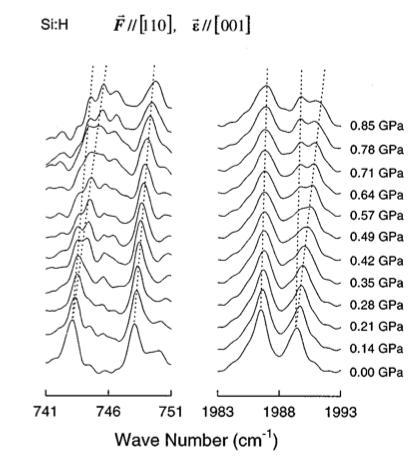 Identification of the hydrogen-saturated self-interstitials in silicon and germanium
Identification of the hydrogen-saturated self-interstitials in silicon and germanium
Silicon and germanium single crystals are implanted with protons. The infrared-absorption spectra of the samples contain sharp absorption lines due to the excitation of hydrogen-related local vibrational modes. The lines at 743.1, 748.0, 1986.5, and 1989.4 cm−1 in silicon and at 700.3, 705.5, 1881.8, and 1883.5 cm−1 in germanium originate from the same defect in the two materials. Measurements on samples coimplanted with protons and deuterons show that the defect contains two equivalent hydrogen atoms. Uniaxial stress measurements are carried out and a detailed analysis of the results is presented. It is shown that the defect has monoclinic-II symmetry, and the orientations of the Si-H and Ge-H bonds of the defect are determined. Ab initio local-density-functional theory is used to calculate the structure and local vibrational modes of the self-interstitial binding one and two hydrogen atoms in silicon and germanium together with the structure of the self-interstitial itself. The observed properties of the defect are in excellent agreement with those calculated for the self-interstitial binding two hydrogen atoms.
Go back